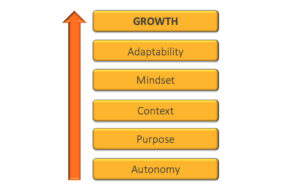It’s easy to get lost in the weeds about this diet or that diet, macro nutrient, and/or calorie counting. Hence, I always appreciate big picture guidance that underscores principles, as opposed to methods. Here is a version of nutrition principles that is included as a part of Performance Psychologist Michael Gervais’ and Seattle Seahawks Coach Pete Carroll’s Finding Your Best online course:
Eat colorful foods:
• Eating whole foods in a variety of colors gives us the best chance to obtain balanced nutrition.
• Aim for 5 different colors on your plate at each of your major meals.
Consume lean protein:
• Protein is essential as it helps build muscle mass, which enhances our metabolism.
• Examples of lean protein include but are not limited to grass fed beef, chicken, wild caught fish, edamame, chickpeas and eggs.
Enjoy healthy fats:
• Healthy fats, in particular those which contain Omega 3’s and monounsaturated fat, are foundational for brain and heart functioning. They also help us stay satiated longer, as they take longer to digest, especially when combined with lean protein and low-glycemic foods such as non-starchy vegetables and beans.
• Healthy fats can be found in certain oils, such as olive and coconut oil, fish such as tuna and salmon, avocados, nuts (e.g.: almonds and walnuts) and seeds like flaxseed and chia.
Other helpful behaviors:
• Start your day with a large glass of water.
• Watch less TV. The sights, memories, emotions and thoughts that are provoked while watching TV or being exposed to commercials can signal our brain and influence how much and what we want to eat.
• Stop counting calories. Eat more of the right foods.
• Be mindful of how your body responds to the food and liquid you consume. Practice a short mindfulness body-scan meditation to tune into signals of hunger and fullness.
• Slow down your eating. It takes 20 minutes for the brain to compute satiety.
• Cut back on added sugar and refined/processed carbohydrates such as those found in anything packaged, e.g., cereal, chips, breads, pasta, cookies, soda, etc.
• It’s natural for you to have cravings. Here’s a good mindful strategy for dealing with them: Pause and notice them, think about where they are coming from, choose how you want to respond.
• Have a plan when eating out. Here are a few suggestions: 1) share a meal, 2) have the server box up half of the meal and bring it at the end to take home, 3) order two small appetizers instead one large meal, giving yourself an option for some lean protein and colorful vegetables, 4) when eating salad look for something with lean protein, nutritious add-ons such as mushrooms or artichokes that are high in fiber, and plain (not candied) nuts. Opt-in to whole fat salad dressing. Studies have found that we absorb more nutrients from vegetables and fruits when paired with fat.
• Change your language around food. Rather than the deprivation mindset e.g. “I can’t eat that…” try, “I don’t eat that…” Research has found this feels more in alignment with self-control.




